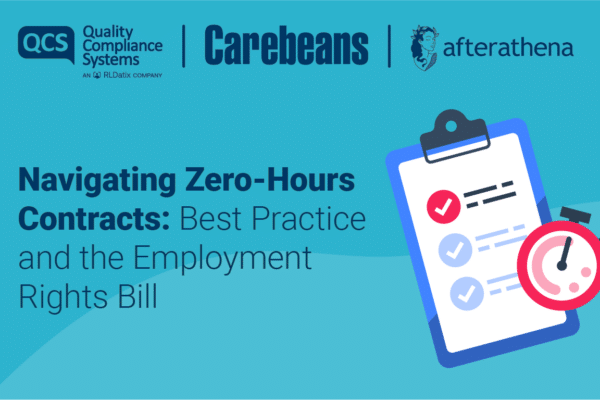
The Brandon Trust has published a report on the way our notion of community care is failing people with learning disability. The Transforming Care and Commissioning Steering Group recommend a new Charter of Rights for people with a learning disability. The ACEVO commissioned report ‘Winterbourne View – Time for Change’ sees Stephen Bubb looking into a new national framework of support to deliver on the Government’s commitment to reduce institutional care placements.
Wait – haven’t we done Community Care?
It seems everywhere you look these days there are reports, commissions and opinions on how we have failed people with learning disability. Which is a bit galling because we have spent twenty years patting ourselves on the back at what a great job we have done in delivering community care. I mean, look at the way we closed all those asylums; I happen to know that where once there were wards, villas and wings there are now housing developments and small business parks.
And as for the residents / inmates / patients / service users / clients – well they were rehoused in the community, right?
The Brandon Trust suggests that what we all believe as a successful de-institutionalisation of people with learning disabilities is actually not such a triumph. Whilst the physical buildings have largely gone, the isolation and segregation they represented persists in the way people living in our towns and cities are still not really visible. They say that their research shows that only half of the people they questioned actually know someone with a learning disability, despite there being over 1.5 million in the UK.
Not Visible?
Back in the early 1990s, I was involved in some similar work after the closure of a number of large institutions had small groups of two and three former hospital residents become tenants in social housing schemes across the North West. We asked the neighbours of a variety of groups what the impact of having people with disabilities living in their street or block had been.
One of the most surprising results of this survey was the large number of people who replied that they had no idea that these neighbours were even there. Now, a less cynical and more optimistic view might be that people have so embraced the differences between people with or without learning disabilities in their community that they fail to recognize this group as separate. I seem to recall we smugly attributed this result to our skill in integration.
However, back then we had a sneaking suspicion that the reason our client group had so seamlessly ‘integrated’ was more about the fact that in most of our cities these days, NONE of us know who lives next door. We have been using an outdated idea of community to measure our success; one in which we all live together in an integrated society like the soap opera examples of Emmerdale, Corrie and EastEnders.
These days, to be highly visible in your community either involves being on the local council, having an ASBO or marrying a celebrity. Ordinary people living quietly are not really noticed. You might argue that these days, this is the norm.
The Brandon Trust concludes that “being connected reduces isolation and improves quality of life”, that “everyone with a learning disability has something to offer their community”; yet this could also apply to the elderly, or to recent immigrants from Eastern Europe, or those with mental illness.
But if as a society we have become less communal and more isolated, are we using the right measures to judge how those with learning disability are successfully integrated?
Cared-for or Competent?
The Brandon Trust report talks about the potential contribution to communities of people with learning disability, which is largely ignored because of the perception of them as in need of care, rather than individuals with skills. It also suggests that paid care cannot replace friendships or community connections. In order to address these points, it would require more than policy tweaks and charters. It would take a radical shift in our approach to disability.
As a society, as humans in 21st century Britain, we have a huge capacity to be charitable. Just absorb the schmaltz-fest that is Children In Need. In order to benefit from public donations, we must remind people that there are those who are needy. Even though much of the money raised for charities goes on ‘enabling and developing’ projects, achieving that amount of fundraised cash requires the shameless yanking of heartstrings.
It would take a long time and a lot of work to convince people to view the disabled as valued members of their community rather than worthy recipients of care and charity. Add to that the overriding need to safeguard the vulnerable and it becomes difficult to see how we can trade ‘cared-for’ with ‘co-worker’. The Brandon Trust found that a huge 91 per cent of those questioned felt that more opportunity should be given to people with learning disability to build relationships in the community. I wonder what the response would be if the next question was ‘how?’
Oh dear. Reading back, I do sound like a grumpy old cynic.
Of course, I agree with the findings of the Brandon Trust; I have spent nearly 30 years working to help people with learning disability have presence, participation and value in their communities. I wholeheartedly agree that we should not incarcerate the challenging a long way from home in places where their care is often compromised by institutional practice.
I think I’m just weary of the quantity of words we have spent on achieving this utopia, when in fact deeds are what we need. Or a recognition and promotion of the people who are working to get us there, in terms of better reward, more enlightened commissioning and personalisation that is more than just a buzz word. For every report produced by the Government, for every pound of every salary spent on generating the pile of words and promises that always rings hollow, a pound is lost to making those words reality.
Enough with the rhetoric; get on with the action.





